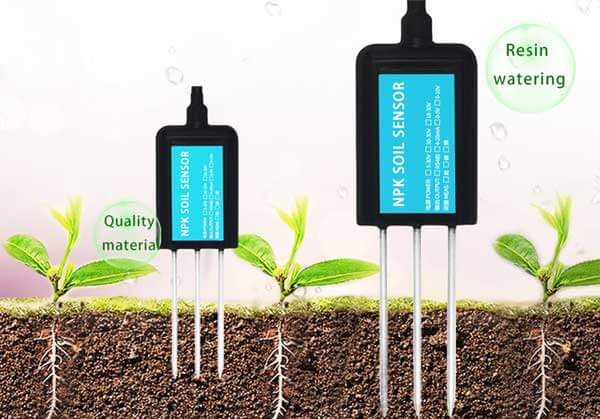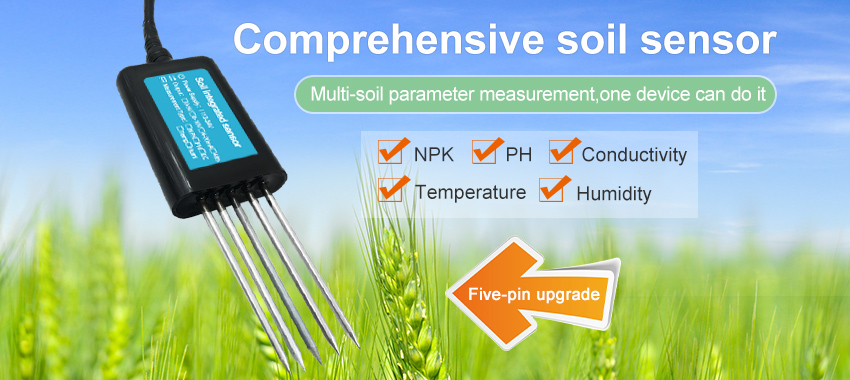Agriculture has been a fundamental aspect of human civilization since its inception. With population growth and increasing food demand, agriculture practices have undergone significant changes over time. Precision agriculture is one such practice that leverages technology to optimize crop yields while minimizing environmental impact. The use of soil sensors is an integral part of precision agriculture. This article explores how soil sensors can revolutionize farming practices by enhancing crop management.

Understanding Soil Sensor Technology:
Soil sensors are electronic devices that measure various parameters such as moisture content, temperature, nutrient levels, pH, and salinity within the soil. They are placed at strategic locations within a field to provide real-time data on soil conditions. The information collected by soil sensors is transmitted wirelessly to a computer or mobile device, enabling farmers to easily monitor and analyze soil conditions.
Enhancing Irrigation Management:
Water is a vital resource in agriculture, and efficient irrigation management is critical to maximize crop yields while minimizing water wastage. Soil sensors play a critical role in this aspect of precision agriculture. By measuring soil moisture levels, farmers can apply water precisely where and when it is needed. This helps prevent overwatering or underwatering, optimizing irrigation practices and conserving water resources. Additionally, soil sensors can detect soil moisture at different depths, providing insights on root zone moisture levels to optimize crop growth.
Improving Fertilization Management:
Fertilizers are essential for providing plants with the necessary nutrients for growth. However, improper fertilization can lead to environmental pollution and economic losses. Soil sensors enable farmers to monitor nutrient levels in the soil, allowing for precise and targeted fertilizer application. By understanding the nutrient requirements of specific areas within a field, farmers can adjust fertilizer application rates and timing accordingly. This not only reduces fertilizer waste but also minimizes the risk of nutrient runoff into water bodies, protecting the environment.
Detecting Soil Variability:
Soil conditions can vary significantly within a single field due to differences in composition, texture, and organic matter content. Soil sensors provide valuable insights into this variability, allowing farmers to create detailed soil maps. By understanding the spatial distribution of soil properties, farmers can implement site-specific management strategies. For example, if a particular area has lower nutrient levels, farmers can apply fertilizer more heavily in that area to ensure optimal crop growth. This targeted approach maximizes resource utilization and minimizes input costs.
Optimizing Crop Selection:
Different crops have varying soil requirements. Soil sensors can provide farmers with accurate information on soil properties, allowing them to select the most suitable crop for a particular field or area within a field. For instance, if soil moisture levels are consistently high in a specific area, farmers can choose crops that thrive in wet conditions. By selecting appropriate crops, farmers can achieve higher yields and improve overall farm productivity.
Detecting Soil Erosion and Compaction:
Soil erosion and compaction are significant challenges faced by farmers. They can negatively impact crop growth and reduce soil fertility. Soil sensors help in detecting these issues early on by monitoring changes in soil moisture, density, and structure. By identifying areas prone to erosion or compaction, farmers can take preventive measures such as implementing erosion control practices or adjusting tillage methods. This enables farmers to maintain soil health and productivity, ensuring sustainable agricultural practices.

Integrating Sensor Data with Farm Management Systems:
The true power of soil sensor technology lies in its ability to integrate with farm management systems. By combining soil sensor data with other data sources like weather forecasts, crop models, and historical yield data, farmers can make better-informed decisions. Advanced analytics and artificial intelligence algorithms can analyze the integrated data to provide actionable insights and recommendations. For example, based on soil moisture readings, weather predictions, and crop water requirements, the system can automatically adjust irrigation schedules or send notifications to farmers for timely intervention.
Conclusion:
Soil sensors have immense potential in revolutionizing farming practices by enabling farmers to make data-driven decisions and optimize crop management. By providing real-time information on soil moisture, nutrient levels, and other parameters, soil sensors enhance irrigation and fertilization management, detect soil variability, optimize crop selection, and mitigate soil erosion and compaction. Integrating soil sensor da
